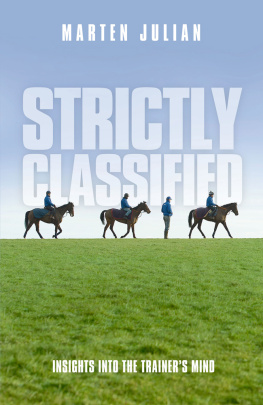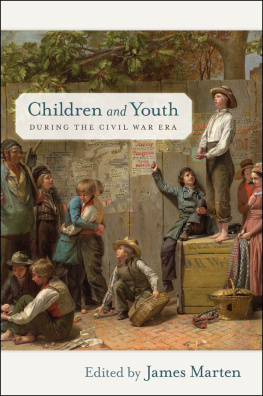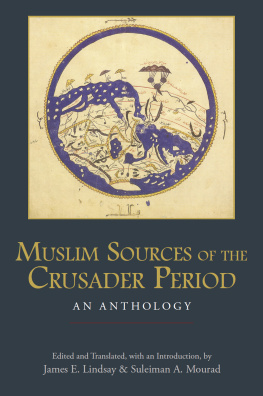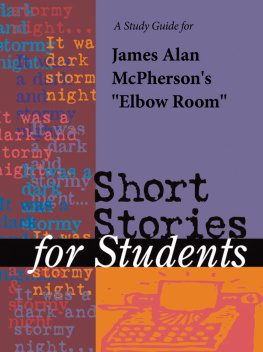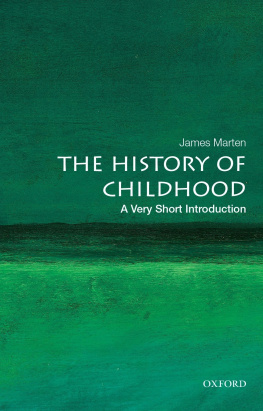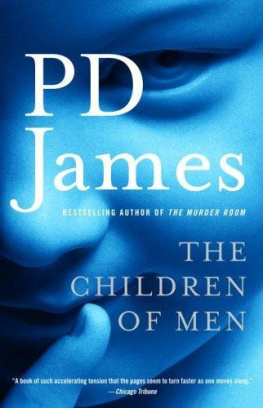Marten James Alan - Children and war: a historical anthology
Here you can read online Marten James Alan - Children and war: a historical anthology full text of the book (entire story) in english for free. Download pdf and epub, get meaning, cover and reviews about this ebook. City: New York, year: 2002, publisher: New York University Press, genre: Politics. Description of the work, (preface) as well as reviews are available. Best literature library LitArk.com created for fans of good reading and offers a wide selection of genres:
Romance novel
Science fiction
Adventure
Detective
Science
History
Home and family
Prose
Art
Politics
Computer
Non-fiction
Religion
Business
Children
Humor
Choose a favorite category and find really read worthwhile books. Enjoy immersion in the world of imagination, feel the emotions of the characters or learn something new for yourself, make an fascinating discovery.

- Book:Children and war: a historical anthology
- Author:
- Publisher:New York University Press
- Genre:
- Year:2002
- City:New York
- Rating:5 / 5
- Favourites:Add to favourites
- Your mark:
- 100
- 1
- 2
- 3
- 4
- 5
Children and war: a historical anthology: summary, description and annotation
We offer to read an annotation, description, summary or preface (depends on what the author of the book "Children and war: a historical anthology" wrote himself). If you haven't found the necessary information about the book — write in the comments, we will try to find it.
Children and war: a historical anthology — read online for free the complete book (whole text) full work
Below is the text of the book, divided by pages. System saving the place of the last page read, allows you to conveniently read the book "Children and war: a historical anthology" online for free, without having to search again every time where you left off. Put a bookmark, and you can go to the page where you finished reading at any time.
Font size:
Interval:
Bookmark:
Thank you for buying this ebook, published by NYU Press.
Sign up for our e-newsletters to receive information about forthcoming books, special discounts, and more!
Sign Up!
A publisher of original scholarship since its founding in 1916, New York University Press Produces more than 100 new books each year, with a backlist of 3,000 titles in print. Working across the humanities and social sciences, NYU Press has award-winning lists in sociology, law, cultural and American studies, religion, American history, anthropology, politics, criminology, media and communication, literary studies, and psychology.
Children and War
A Historical Anthology
EDITED BY
James Marten
Foreword by Robert Coles

NEW YORK UNIVERSITY PRESS
New York and London
2002 by New York University
All rights reserved
Library of Congress Cataloging-in-Publication Data
Children and war : a historical anthology / edited by James Marten.
p. cm.
Includes bibliographical references and index.
ISBN 0-8147-5666-2 (cloth : alk. paper)
ISBN 0-8147-5667-0 (paper : alk. paper)
1. Children and war. I. Marten, James Alan.
HQ784.W3 C53 2002
303.66083dc21 2002004989
New York University Press books are printed on acid-free paper,
and their binding materials are chosen for strength and durability.
Manufactured in the United States of America
10 9 8 7 6 5 4 3 2 1
To the children, and to the fathers and mothers, brothers and sisters, aunts and uncles, who died in New York, Washington, and Pennsylvania on September 11, 2001.
And to Lauren and Eli Marten,
that they may never become children of war.
Robert Coles
The past century has told us much about the inner life of childrentheir desires and worries, their attachments and aspirations for the future. By now we understand the home life of children, as well as their struggles within the family and on the streets and playing grounds of the neighborhoods which they have come to know as their very own. We also observe schoolchildren with increasing sensitivity and assurance, hence the substantial number of clinical workers who help teachers and parents to view the youngsters in their charge with a kind of confident sophistication and subtlety denied earlier generations of mothers and fathers, as well as classroom instructors. Moreover, as the child psychoanalyst, Erik Erikson, so wisely reminded us, we can learn about the world through the eyes and ears of children: What they notice and remember hearing gives us a good idea of what is out there, waiting for them to attend. Note the title of Eriksons first and seminal book, Childhood and Societyits author is at pains to insist that even as the young are shaped by the world around them, that holds as well for their grown-up guardians, at home or in the classroom. So often, Erikson once remarked to a group of his colleagues,
we want to explain a childs behavior by looking at the social rules of the game, the values and norms that affect a boy, a girl, who grows up in a country, in a class or race or religion that is part of that countrys life. But there is another side of that coin: children require our care, our constant concern, and so their presence among us exerts a strong influence upon us, to the point we become the beneficiaries of their requirements (and once in a while, I suppose it can be said, the victimssince some children can drive some of us, as we all know to say, to distraction.
A subtly knowing and seasoned clinician was remarking upon the young, as they prod and stir us, especially at a time, these days, when we are so aware of their complex psychology, so interested in knowing about their yearnings and apprehensions, their secrets, their daytime thoughts and evening experiences (the passing dreams and nightmares that come upon them once they have gone to bed, shut their eyes, entered the oblivion of sleep, until the morning call of daytime action asserts itself and gets heard). Of course, the ordinary childhood of family and neighborhood life can abruptly and threateningly give way to the felt urgencies and fears, the shared social jeopardy, of war, as it travels well beyond the confines of battlefields into the cities and towns behind the scenes of conflict. Airplanes bring destructive danger; radios and televisions tell of what is happening far away, but also of what can, alas, in an instant become all too dangerously near at hand. Once war involves a childs ongoing psychological life, all sorts of consequences ensue, as this books many essays make quite clear: yes, the inner emotional turmoil, but also the suffering, the constant jeopardy and vulnerability, which in their sum become an all too evident and overbearing presence, prompting nervous irritability and fearfulness, needless to say. But as we learn in the pages that follow, the consequences of war prompt other responses, too, including a combative desire (on the part of certain children) to take part in the very violence visited upon them and their families or neighbors. Indeed, the heart of this anthology is its comprehensive and telling account of war as it has become a critical aspect of the lives of children across the continents.
As I read these accounts, I kept thinking of the photographer Robert Capas collection of images, published many years ago as Children of War, Children of Peace. Those visual images in their own way spoke volumes of what befalls the young as violence and hatred come to rule every days experiences (words heard, deeds and sights seen). I also took note of the words of this anthologys editorhis fine introductory assist to us readers, which helps carry us through this extraordinary volume, a repository of history and psychology and sociology as those disciplines can be fathomed (and narrated) by recourse to children as witnesses, and even antagonists, or protagonists, in what takes place during certain wars. Once, ruminating on war and children as she observed boys and girls in London during the Nazi air blitz days of the early 1940s, Anna Freud (who appears in this book) fell into a spoken memory as she conversed with a few of us lucky to be in her presence (New Haven, 1972):
We were trying so hard to be of psychological assistance to those children, but I have to say, they were of great assistance to usI mean [by that] there was so much for us to learn from them. We learned about the stresses placed on the young by war, but we also learned about the agility and resourcefulness of children, how they become fighters as well as hurt ones (I mean, how they responded in a difficult time, became solid citizens of a country gravely embattled). A remarkable time for the boys and girls, but a remarkable time for uswe became, in a way, their interested, always alert students as well as their adult guardians!
This anthology will help many of us, yet again, to learn from (and certainly, about) childrenas did Anna Freud and others. Now, courtesy of one essay after another, and an editors knowing, thoughtful diligence, we readers will be able to comprehend human possibility and variousness as they affirm themselves in young people whose lives become connected to war (hurt by it, or stirred toward involvement in it)children, in a sense, at war during war (within their minds, or within their bodies).
Like all anthologies, Children and War is truly the product of the work of many different people coming together to tell the often sad, sometimes inspiring, but always important stories of the ways children have been and are affected by war. This particular team came together when, at the invitation of Jennifer Hammer of NYU Press, I issued a call via H-Net for essays on children and war. Well over forty scholars responded. Indeed, one of the most difficult parts of editing this volume was cutting the number of proposals down to a workable one. I was aided in that task by the comments of three anonymous readers of the book proposalwhich still included over thirty ideas for essayswho, in addition to advising me on which essays would and would not fit, also helped guide my own thinking about how to frame the essays in my introductions. I would also like to thank Jeanine Graham and Tom Cardoza for offering suggestions on how to improve the general introduction.
Next pageFont size:
Interval:
Bookmark:
Similar books «Children and war: a historical anthology»
Look at similar books to Children and war: a historical anthology. We have selected literature similar in name and meaning in the hope of providing readers with more options to find new, interesting, not yet read works.
Discussion, reviews of the book Children and war: a historical anthology and just readers' own opinions. Leave your comments, write what you think about the work, its meaning or the main characters. Specify what exactly you liked and what you didn't like, and why you think so.

